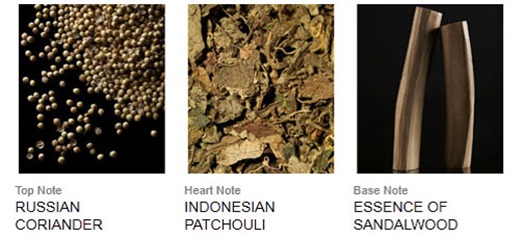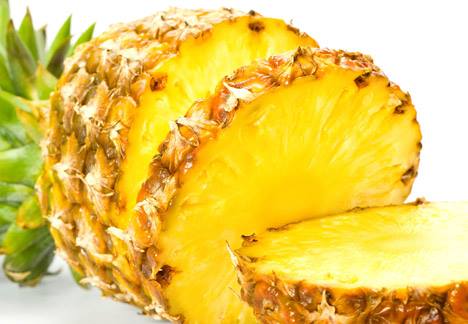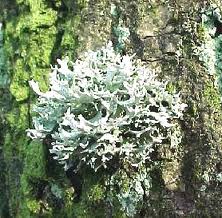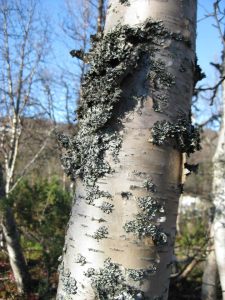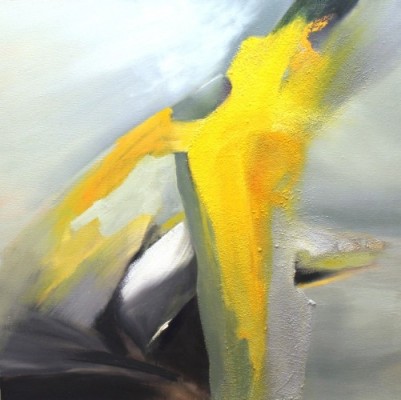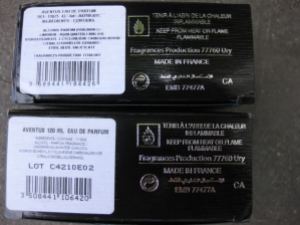 There’s a man who comes to mind when I wear (vintage) M7, the groundbreaking oud eau de toilette from YSL. Each and every time, I see Zinedine Zidane (or “Zizou”), the legendary football/soccer player. He is dressed in the most beautifully tailored, sleek, expensive, dark suit as he sits in the shadows on the white marbled terrace of the Monte-Carlo’s Hermitage hotel one balmy summer’s night.
There’s a man who comes to mind when I wear (vintage) M7, the groundbreaking oud eau de toilette from YSL. Each and every time, I see Zinedine Zidane (or “Zizou”), the legendary football/soccer player. He is dressed in the most beautifully tailored, sleek, expensive, dark suit as he sits in the shadows on the white marbled terrace of the Monte-Carlo’s Hermitage hotel one balmy summer’s night.
 It is the annual International Fireworks festival, and smoke filled the starry sky above, jostling with the aromatic scent of the Mediterranean. To his right, the vast yachts of the Monaco port lay down below; to his left, the dizzying array of the rare, unique, stratospherically expensive cars that are parked in front of the nearby Hotel de Paris, with the tinkling sounds of the glittering casino behind them. He sits, enjoying Spain’s fiery exhibition and the accompanying sounds of Ravel’s Bolero that play out somewhere from the darkened sea ahead of him. He is a sight, this man with his big hands lightly dusted with hair around a snifter of brandy, his long legs stretched out in front of him, his beautifully chiseled lips, his face so rawly sharp and contoured that it almost verges on the ugly were it not so fierce. There is a clattering of heels behind him; a beautiful woman approaches, leans down to whisper in his ear, and tries to sneak her room key into his jacket. He stops her with a gentle smile and a firm shake of his head, and she walks away with a sigh. One of many women who tried that night, entranced by the lure of the man, and the scent of M7.
It is the annual International Fireworks festival, and smoke filled the starry sky above, jostling with the aromatic scent of the Mediterranean. To his right, the vast yachts of the Monaco port lay down below; to his left, the dizzying array of the rare, unique, stratospherically expensive cars that are parked in front of the nearby Hotel de Paris, with the tinkling sounds of the glittering casino behind them. He sits, enjoying Spain’s fiery exhibition and the accompanying sounds of Ravel’s Bolero that play out somewhere from the darkened sea ahead of him. He is a sight, this man with his big hands lightly dusted with hair around a snifter of brandy, his long legs stretched out in front of him, his beautifully chiseled lips, his face so rawly sharp and contoured that it almost verges on the ugly were it not so fierce. There is a clattering of heels behind him; a beautiful woman approaches, leans down to whisper in his ear, and tries to sneak her room key into his jacket. He stops her with a gentle smile and a firm shake of his head, and she walks away with a sigh. One of many women who tried that night, entranced by the lure of the man, and the scent of M7.

 Zinedine Zidane may be a forceful, brutal panther on the football field but, in a suit, he is the most perfect embodiment of raw, sharply-chiseled masculinity and muscular power sheathed in refinement. Tamed, he is sophisticated, jawdroppingly sexy, debonair and virile. He is exactly like M7 which is an oud fragrance that belongs in Monte-Carlo, my old home, and nowhere else.
Zinedine Zidane may be a forceful, brutal panther on the football field but, in a suit, he is the most perfect embodiment of raw, sharply-chiseled masculinity and muscular power sheathed in refinement. Tamed, he is sophisticated, jawdroppingly sexy, debonair and virile. He is exactly like M7 which is an oud fragrance that belongs in Monte-Carlo, my old home, and nowhere else.
Released in 2002, YSL’s M7 was far, far ahead of its time — and its brash arrival on the scene was not helped by print ads featuring a beautiful, hairy, male model in full frontal nudity. M7 was a total bomb and marketplace failure, but in its legacy and its huge effects on the now-endless oud perfume market, it may be one of the most influential perfumes of the past few decades.
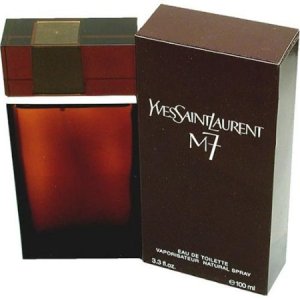
The vintage bottle and box for M7, original 2002 version.
M7 is an eau de toilette that was released by YSL in 2002 under the direction of Tom Ford. The actual noses were Jacques Cavalier and Alberto Morillas. M7’s huge failure led YSL to reformulate it in 2008 — undoubtedly at the order of YSL Beauté’s new overlord, L’Oreal. The reformulated version lasted two years until 2010 when the whole perfume was quietly taken off the market. In 2011, YSL launched M7 Oud Absolu, a de-fanged version of the original monster. (And, somewhere in between all these changes, they found the time to release M7 Fresh, too! Clearly, they were at a loss with what to do with M7 and were trying every possible avenue to fix the problem and their loss in anticipated revenue.) M7 itself faded away, only to become a prized commodity on eBay where it is still available and where it is snapped up with ferocious intensity. I was lucky to have a friend send me a small amount of his bottle (which he bought on eBay), and I think it’s beautiful.
The official notes in M7 are as follows:
Top: Bergamot, mandarin, rosemary.
Middle: Vetiver, agarwood.
Base: Amber, musk, mandrake root.
I would bet my life that those notes aren’t even the half of it. I would bet you anything! I smell far, far more in M7, starting with walloping doses of labdanum, going through to spices like cardamom, florals and some sort of incense, before ending with vanilla. If there is no labdanum and incense in M7, I will eat my hat. (I will eat my hat, I tell you!) The amount of stuff I detect is so far in excess of those measly, abbreviated, 8 official notes that my personal list of what I smell would look something like this:
Top: Bergamot, mandarin, rosemary, cardamom, clary sage.
Middle: Vetiver, agarwood, Damascena rose, black coffee grinds, jasmine [perhaps Jasmine Sambac].
Base: Amber [probably something like Tolu Balsam], musk, mandrake root, labdanum, incense/frankincense, and something vanilla.
Vintage, original M7 opens on my skin with a beautiful burst of zesty, lemon-nuanced bergamot and rosemary. Within seconds, the citrus aromatic turned honeyed and warm, dusted by spices. There has to be cardamom in M7, I have no doubt. Subtle hints of oud flicker in the background, slow at first, and never medicinal or similar to rubbery pink Band-Aids. Instead, it feels warmly musked, slightly earthy, heavily infused with honey, and oddly floral in nature.
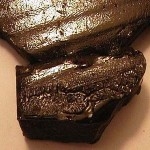
Labdanum compiled into a chunk. Source: Fragrantica
There are massive doses of labdanum under that wood. For one thing, that secondary burst of notes quickly turns into an aroma that can only be called “cherry cola.” For a number of people, “cherry cola” is a scent strongly and consistently evoked by labdanum with its nutty, masculine, dirty, sometimes leathery nuances. I don’t always get the note when I encounter labdanum, but the connection has arisen enough times that I can tell the source of the smell here. The combination of the earthy, slightly medicinal oud with labdanum’s very honeyed, faintly leathered, almost chocolate-y undertones turns the whole thing into something that not only evokes “cherry cola,” but even a little bit of “cherry cough syrup.” The medicinal tinge is so faint that it’s really more root-beer like in effect but, either way, I must admit, it’s not my favorite note in the world.

Clary Sage. Source: TreeFrogFarm.com
At the same time, and in contrast with those rich notes, there are fragrant aromatics and fruity nuances that cut through the spiciness. There are hints of oranges, feeling almost candied, accompanied by something extremely herbaceous in nature. It’s not just the rosemary; there is something that definitely feels like clary sage with its lavender-y but, also, floral quality that is underpinned by a light leather nuance. The lavender note adds to the fleeting fougère element of the opening, but it’s extremely subtle and muted. It feels like there are other herbal notes too, like bay. Possibly even something a bit papyrus-like in nature. As for the vetiver, it is definitely there, too — dry but, also, earthy. It flickers under the thrust of the main notes, the cherry cola and musky woods.

Source: eHow.com
Ten minutes into M7’s development, I start to go a little mad with frustration. There are florals notes in M7 that far surpass that initial pop of something like lavender. I would swear that there is a minuscule drop of jasmine, accompanied by an even stronger, large amount of rose. It feels very much like a dark Damascena rose: fruity, jammy, dark, meaty and backed by some earthy, dark accords. It feels absolutely identical to the rose note in Tom Ford‘s Private Blend Café Rose. Absolutely identical, right down to the wet, black, coffee grinds in that perfume. The only difference is that, here, it is strongly intertwined with M7’s cherry-cola labdanum note.

Source: Tumblr
Twenty minutes in, M7 softens — a lot. It is never a hugely powerful, thick, heavy fragrance to begin with but, even for an eau de toilette, I’m surprised by how quickly it becomes a gauzy, airy thing. But what a smell it is! M7 is quietly radiating: aromatic herbs with clary sage; labdanum cherry cola; spiced orange; a very honeyed oud with a tinge of medicinal earthiness; soft muskiness; heaping doses of a jammy, red, dark, coffee-infused rose backed by a touch of jasmine; and, now, sweet, warm incense. The incense smoke curls like tendrils that wrap around the other notes like a ribbon. It has the sharpness of frankincense, though I wouldn’t be surprised if the nuttier, slightly sweeter myrrh incense were also used. The smoke helps cut through a lot of the heavy syrupy sweetness of that cherry cola note (which I truly don’t like), and blossoms beautifully with the perfume’s development.
Forty minutes in, the perfume starts to shift. The oud becomes significantly more prominent, feeling creamy and smooth, while the cherry-cola labdanum and florals start to recede a little. The agarwood is accompanied by muskiness, an increased amount of incense smoke, and sweet, gauzy, light vanilla. All traces of citruses and rosemary have faded to a ghostly presence in the background, leaving behind primarily an oriental scent that is woody, creamy, slightly spiced, resinous, and earthy. Unfortunately, its sillage becomes absolutely terrible, requiring me to bring my arm right to my nose to detect it. (And it only gets worse.) By the end of the first hour, my skin has already cycled through most of M7’s top and middle notes, and the drydown begins right around the 90 minute mark. I’m shocked by the rapidity with which we’ve come to the end.
In its final stage, M7 turns from a labdanum-oud scent backed by incense, earthy notes, musk and vanilla into something considerably more abstract and ambered. The base smells beautifully nutty, spiced, creamy, supple, smooth and warm. There are flickers of that lovely incense sitting atop soft vanilla and a muted woodiness. Unfortunately, the whole thing so sheer and thin on my skin, so incredibly elusive, that I’m continuously preparing myself for it to end completely. It doesn’t, though. M7 lasts for another 2 hours in a state of miniscule, ghostly lightness; every time I think it’s finally gone, a iny, flickering note of amorphous, vague, spiced, woody, musky vanilla pops up. There are small patches of it on my skin that hang on tenaciously, making M7’s full duration on my skin clock in at almost exactly 3 hours. But, if we’re to be really candid, M7 really ended at 2.25 hours. I suppose that’s a lot better than what I got from the reformulated 2008 version which lasted a whole solitary hour on me — but I still feel a little cheated.
I really loved the 2008 version of M7, but I far prefer the original. Though the cherry-cola aspect to the labdanum is not my favorite, the very honeyed, spiced, earthily sweet oud is truly lovely. As I’ve said a few times recently, I’ve got oud fatigue but this is one of the most beautiful, refined, sophisticated and, yes, admittedly tamed, versions of agarwood that I’ve come across. There are obvious similarities between the two formulations, but the original vintage version seems like a much more amplified, concentrated version. (Well, relatively speaking, given just how sheer and light both eau de toilettes were on my skin in terms of weight and sillage.) With the 2008 version, I admired the lovely honeyed feel to the perfume, along with the spices which — in that instance — felt to me like cinnamon. However, I much prefer the richer, nuttier, duskier cardamom feel of the original M7, along with the significantly richer effect of the labdanum. (I no longer have the remnants of that sample to compare and see if there was labdanum in any serious quantity in the 2008 version.) I suspect there was a significantly lower quantity for two reasons: 1) I never once smelled “cherry cola” with the 2008 version and actually said so in my review back then; and 2) the oud had a far greater medicinal nuance there. It wasn’t huge and never felt antiseptic, but there was a clear tinge of pink rubber bandages that the original 2002 version lacks. My theory is that the lower levels of labdanum meant a lot less honey to soften, warm and tame the agarwood.
 The whole scent is refined, sophisticated, elegant, and sensuous. This is not an Emir’s oud; it doesn’t evoke the Middle East and anything exotic. It’s not unctuously thick, screamingly aggressive, swaggeringly masculine or abrasive. There is some power underneath the notes, some very rugged, masculine qualities that linger, but it’s been refined, like a powerful Zinedine Zidane in an YSL suit. It’s smooth and flows like silk. The only part where Zidane doesn’t apply to this analogy is in who can wear this perfume: I think this is an incredibly unisex fragrance. Women who love rich, spicy Orientals with agarwood would absolutely adore this. The oud is so tamed, many may actually find it not to be enough. It is certainly nothing like a Montale oud — not even remotely! It’s also much smoother, richer, softer, spicier and deeper than many of the By Kilian Arabian Night oud fragrances. (There aren’t really any similarities between them, in my honest opinion.)
The whole scent is refined, sophisticated, elegant, and sensuous. This is not an Emir’s oud; it doesn’t evoke the Middle East and anything exotic. It’s not unctuously thick, screamingly aggressive, swaggeringly masculine or abrasive. There is some power underneath the notes, some very rugged, masculine qualities that linger, but it’s been refined, like a powerful Zinedine Zidane in an YSL suit. It’s smooth and flows like silk. The only part where Zidane doesn’t apply to this analogy is in who can wear this perfume: I think this is an incredibly unisex fragrance. Women who love rich, spicy Orientals with agarwood would absolutely adore this. The oud is so tamed, many may actually find it not to be enough. It is certainly nothing like a Montale oud — not even remotely! It’s also much smoother, richer, softer, spicier and deeper than many of the By Kilian Arabian Night oud fragrances. (There aren’t really any similarities between them, in my honest opinion.)
What we have with the original M7 is — without a doubt — the template for many of the fragrances that Tom Ford would go on to put out under his personal label. The closest and most obvious progeny is his Private Blend Oud Wood, but there are also traces of M7’s impact in Tobacco Vanille, Café Rose, and even to a minor extent, the new Sahara Noir fragrances. I have no doubt that M7 was a work of love for Tom Ford, even if he didn’t actually blend all the notes together himself. For this, his very first fragrance, he must have directed Jacques Cavalier and Alberto Morillas to include all his favorite notes or combinations: oud with cardamom; oud with labdanum; oud with frankincense; labdanum and frankincense; a jammy rose with bitter, earthy elements; woody notes with vanilla and vetiver; and more. M7 is a roadmap that branches out to all sorts of Private Blend fragrances, but, honestly, it is better than almost all of them with two exceptions: sillage and longevity. On my skin (which admittedly is wonky) M7 had maybe 0.01% of most Private Blends’ potency and duration. I’ve often said that Tom Ford’s Oud Wood was an attempt to remedy the mistakes he went through with M7 but, clearly, he also decided to make up for M7’s sheer body and lifespan as well. Is Oud Wood a better fragrance? That’s a personal, subjective matter. I think it’s a very different fragrance; and I much prefer M7.
As a general matter, M7 is not only a much adored fragrance but it is also one that seems to have a startling, seductive effect on those who smell it. Review after review on Fragrantica seems to imply that this is an absolute lady-killer. One of my closest friends had told me her boyfriend wears M7 and that it made her… well, I’ll spare you the blushes. But I thought her reaction was simply because he’s a bit of a hunk. Well, apparently, M7 turns everyone into a bit of a hunk! A small sampling of the comments:
- I received the best compliment ever from a sexy girl after she buried her face in my neck, ‘f**k me now, and again tomorrow, just so I can smell that again.’ nuff said.
- A woman at work commented the other day “You smell amazing you’re affecting my pheromones”
- This is Hardcore Sex in a bottle!!! Its Sweaty, Its Dirty, Its Intoxicating…. Its so damn nasty…..I wouldn’t be surprised to know that this one has pheromones on it.
- It smells like sex, just in a bottle. That’s all. Yes, there is so much more, but that’s all that you, dear reader, need to understand here. There’s nothing else quite like vintage M7, and it lasts for DAYS.
- 1. Put a man in a blender. 2. squeeze. 3. add alcohol. M7 formula.
- i like to wear even though i’m a girl. smells very dark, erotic, strong,wild …… it makes me think: “Take me!”
- YOWZA! YOWZA! YOWZA! [..] “M7” is unashamed of its sexy, primal, and animalistic bed-scent persona. Any man entering a room with a bunch of ladies better proceed with caution while donning this fragrance…..They won’t be able to keep their hands to themselves. I know I wouldn’t.
I don’t agree with all parts of the comments. For one thing, I honestly don’t think M7 smells dirty in the slightest. As for animalistic, I suppose it depends on your definition of the word. M7 is not “animalic” in the real perfume sense of raunchy, skanky, intimate, sweaty, or fetid. With regard to the claim of M7 lasting for “DAYS,” I know I’m not the only person who had terrible longevity with it (though there are very few of us out there). Other than that, however, yes, this is an incredibly sensuous smell and yes, I can see how it may lead to thoughts of sex.
As for other comments on Fragrantica, you may be interested to know that a large number of people write about the “cherry cola” opening to M7; a small amount mention that they smell lavender, florals or incense (which supports my argument that M7 has perhaps double the officially listed notes); and a handful talk about how it is fleeting in nature. Women love to wear it on themselves as much as they love to smell it on men. In fact, in a He Said/She Said assessment of vintage M7 on Now Smell This, the male reviewer thought it was simply too, too much, while the female one adored it:
He says: I first tested M7 on a warm spring day in Kyoto and immediately thought, “Well this isn’t the best time of year to launch this.” The scent was heavy and rich, masculine and earthy. The most prominent feature was the centerpiece of vetiver — and I’m not a huge fan of vetiver. Having had countless chances to re-visit it, and even more chances to purchase it (I haven’t), I still come to the same conclusion: this is simply too much of a good thing. As a candle, yes. As incense, yes. But as an Eau de Toilette, it’s just too much. If there was some way the fragrance could have been lightened, sweetened, smoked, anything, it could have helped… […]
She says: […] on the right day, it is one of my very favorite fragrances for men. [¶] As with most fragrances containing agarwood, it starts with a bit of a medicinal edge, but that fades along with the short-lived citrus top notes. After that, it is dark, warm, and dry, with a mild spiciness and deep earthy woods. To my nose, it isn’t heavy in the least, but it does make a statement, and the intensity of the vetiver and agarwood are not likely to suit you unless you like both notes. [¶] It is rare that I find a scent too masculine to wear, but M7 probably qualifies on that score. I do wear it, but I rarely wear it out of the house. On a man, it is one of the sexiest fragrances I can think of.
I must really have wonky skin, because, damn, it was so sheer and light on me! If only it had been heavy, rich, and “too much of a good thing” — I would buy it immediately! And, obviously, I found it quite wonderfully, perfectly sweet in an ideal balance of smoke and woods. I’m also surprised that the male reviewer thought M7 was too much. Judging by the comments on Fragrantica, men are writing in screaming all-caps of euphoria about M7, with many stating that it is the King of Ouds, bar none. That last comment is repeated to such an extent, it too leaves me a bit baffled since, on my skin, there truly was not a huge quantity of agarwood during any of my repeated tests. It was far too refined in amount and feel. (Hence, the analogy to Monte Carlo.) I’m also confused by the repeated comparisons to Nasomatto‘s Black Afgano, though the commentators think M7 blows it out of the water and is infinitely superior. I haven’t tried that oud fragrance, but since it is famed for smelling just like marijuana, I truly can’t see the similarities.
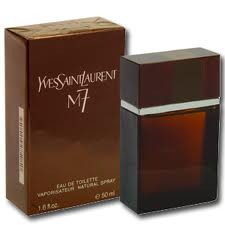
M7 Original in the solidly dark bottle.
Regardless, I genuinely believe that M7 lives up to the hype, so if you are want to take the next step and try to find a bottle on eBay, I’ll tell you need to look for. I’ve previously written about how to find true, original M7, in the context of the 2008 reformulated version, so I hope you’ll forgive me for repeating a chunk of that information because, you see, the bottles and boxes are key.

Reformulated bottle. Note the clearness which is on both sides and, also, on the bottom.
The original M7 as shown above is packaged in a deep brown bottle that is solidly brown all around and has a silver band at the top. Its box lists four ingredients. In contrast, the reformulated version of M7 comes in a box that is really essentially clear with just a big solid sticker of brown on the front and back; you can tell it’s the reformulated version because the sides and bottom of the bottle are completely clear.

Its box is also different; it now lists 14 ingredients instead of 4. Despite the increase in ingredients, however, the reformulated version is substantially weaker than the original, emphasizes amber over faint oud, and lasts even less time (both on my skin and on others). That said, both versions have the same dry down.
In terms of pricing, almost anything goes. Like much to do with vintage fragrances on eBay, it’s a matter of luck, timing, and who else is bidding. I’ve seen almost full 1.7 oz/50 ml bottles go for $80; I’ve seen full 3.4 oz/100 ml bottles go for around $300 (especially on Amazon); and I’ve seen everything in-between. There is always someone selling samples of the vintage on eBay which is lucky because nowhere else carries it. Surrender to Chance’s listing for M7 is for the 2008 reformulated version; I know because I ordered it. But on eBay, right now and for a short while, there are listings like the one here where a seller has 10 mls of vintage M7 for $21.99 (only 1 decant left), or this British eBay listing for a tiny 1 ml vial for GBP 3.75. Or, you could get a large 3.4 oz slightly used tester of vintage M7 for about $110 here. (As a side note about M7 on eBay, “M7 Fresh” and “M7 Oud Absolu” are totally different things. The Oud Absolu is the very final, current formulation of M7 and nothing like the original! Also, I have no clue at all about the M7 after-shave that is often sold there too. Be careful and make sure your M7 Vintage is not M7 Vintage After Shave because the bottles do look alike.)
Obviously, these listings will soon end and the links will be of no use, but my point is to that you can absolutely find bottles of M7 out there without paying an arm, a leg and a house. Is it worth getting a slightly used bottle? That’s up to you. For vintage perfumes of any great renown, it’s not easy getting a sealed, full bottle at a truly low price, but I suppose it is possible if you’re very patient and very lucky. For me, personally, I think $110 for a 3.4 oz bottle of some famous perfume that is almost full is a great price, especially compared to the cost of some niche perfumes out there today.
Man or woman, I think M7 is worth tracking down, even if it’s only a sample to begin with. It’s seductive, sensuous, creamy, sometimes utterly mesmerizing, and always incredibly refined. It is truly the Monte Carlo interpretation of oud fragrances. It’s also a little piece of perfume history, and a whole lot of glory.
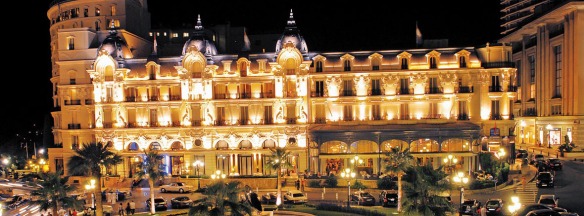
Source: palaces.monaco-hotel.com




